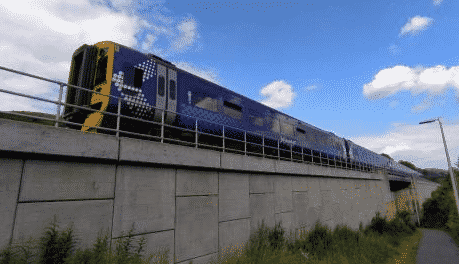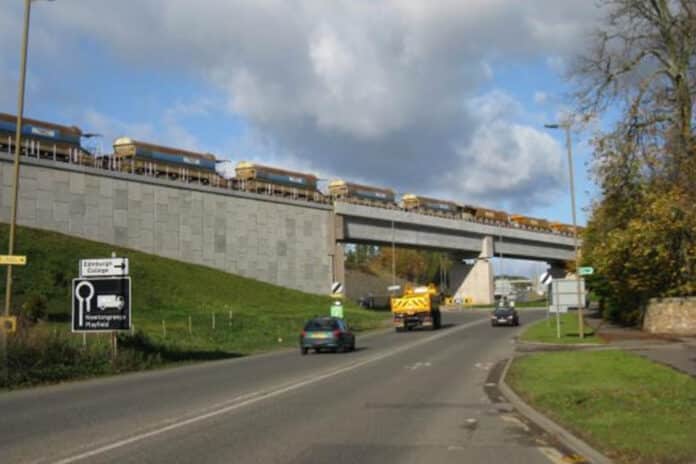David Carson, Business Development Manager at Reinforced Earth Company, on the company’s worldwide experience of designing and supplying retaining walls to support the railways.
Reinforced Earth Company is ready and raring to protect the railways in the UK with its retaining wall structures.
The civil engineering structural design company and supplier of materials for retaining walls, arches and related structures has been doing so for more than 50 years.
In that time the company has installed over 100,000 structures, covering over 60 million m2 of surface area across a diverse range of markets all over the world.
Business Development Manager David Carson reflects on the success of the company’s work on the Borders Railway and how its technology has a vital role to play in the future of the railways.
“Our goal is to create, design and supply innovative technologies to the civil engineering industry with a strong commitment to excellence in design, service and public welfare,” he said.
Reinforced Earth and our Precast Arches bring all the answers to the legitimate concerns for safety governing railroad designs and their exploitation.
Reinforced Earth’s Director Tony Austin notes regarding the company’s work on the Borders Railway, Reinforced Earth provided 26 structures – 9,600m2 of retaining walls of which seven structures and 5,000m2 of walls directly supported the rail lines. This included work on overbridges, underbridges, railway flyovers, footbridges and stations. The full article can be found here.

Tony said: “Reinforced Earth is a technique which by utilising backfill properties significantly reduces the amount of concrete poured over other methods.
The ScotRail project was named the Royal Institution of Chartered Surveyors’ Scottish Infrastructure project of the year in 2016 for its delivery of essential facilities, services and infrastructure.
“In certain situations, such as where space was restricted and the structure footprint had to be minimised, the retaining walls had to support the embankment together with associated live load from the railway,” said Tony.
Using the LM71 train model, Reinforced Earth was able to apply characteristic vertical surcharge loads together with dynamic lateral ones such as nosing and centrifugal forces.
Tony said: “Some ramp walls were particularly challenging as the height to width slenderness ratio pushed the limitations of the code of practice. Therefore, the design used several different techniques to analyse the critical failure mechanism.
“Inextensible galvanised steel soil reinforcement was used for the walls supporting the railway, as it is stiffer and less prone to long terms creep strain than polymers – it’s the guarantee of minimal deformations under high loads.
“Its long-term durability is well known and endorsed by a HAPAS/BBA certificate. All the designs were undertaken to ensure a 120-year service life would be achieved.”
The technology is similar to highway situations. Except the design of retaining walls to support the track bed is adapted to comply with safety requirements.
“Railway loads differ from highway loads in regard to intensity, frequency and associated vibrations. With over 50 years’ experience of Reinforced Earth companies worldwide provide an incomparable return of experience regarding highly loaded, safety critical structures,” said Tony.
“Reinforced Earth structures absorb the vibrations induced by passing trains inherently well as evidenced by numerous tests in the USA, France and Germany. This is especially critical for high-speed railway lines, such as LGV SEA where Reinforced Earth walls support the high-speed track up to speeds to 320 kph.”
The railway applications use the same technologies as those used for roads. However, design is modified to consider specific requirements concerning the surcharges or coefficients of safety, especially for high-speed trains.
Visit https://www.reinforcedearth.co.uk/news-events/ for more details.







































 0113 2082620
0113 2082620 info@railbusinessdaily.com
info@railbusinessdaily.com 15 Mariner Court, Wakefield WF4 3FL
15 Mariner Court, Wakefield WF4 3FL

